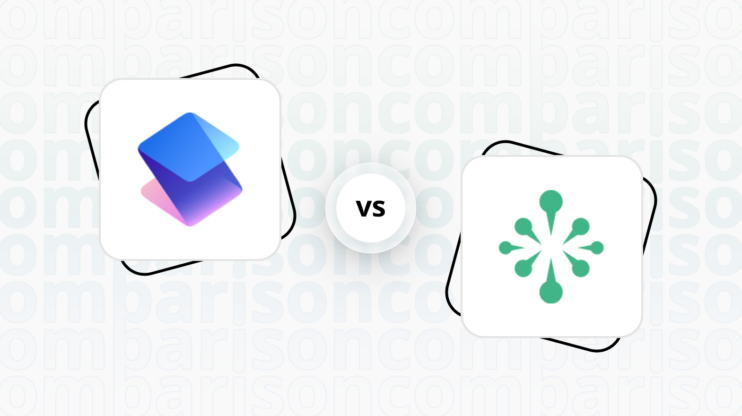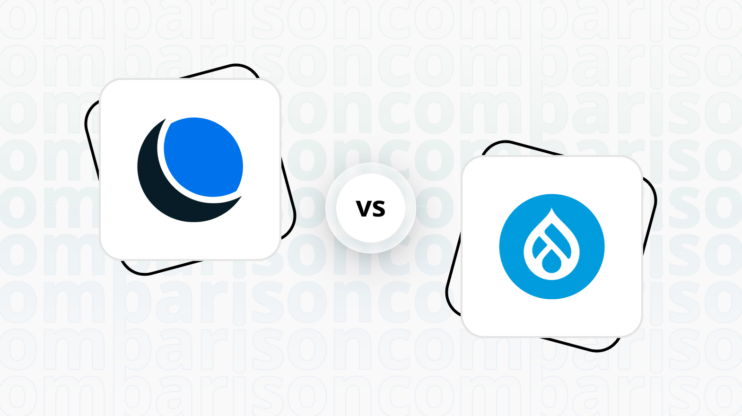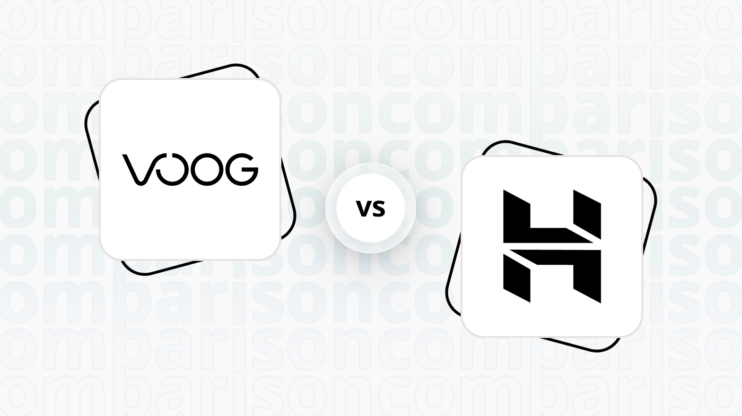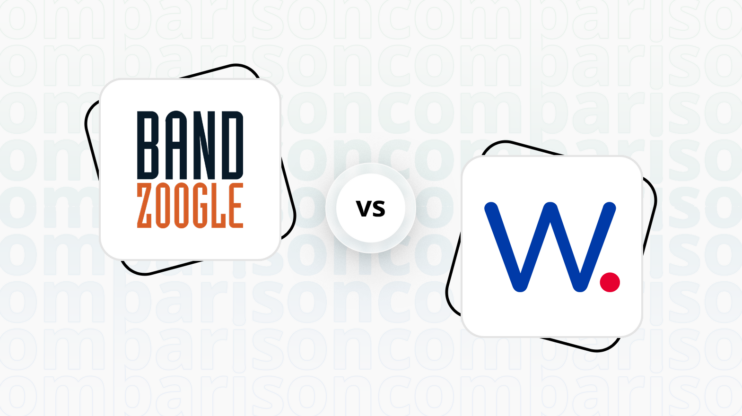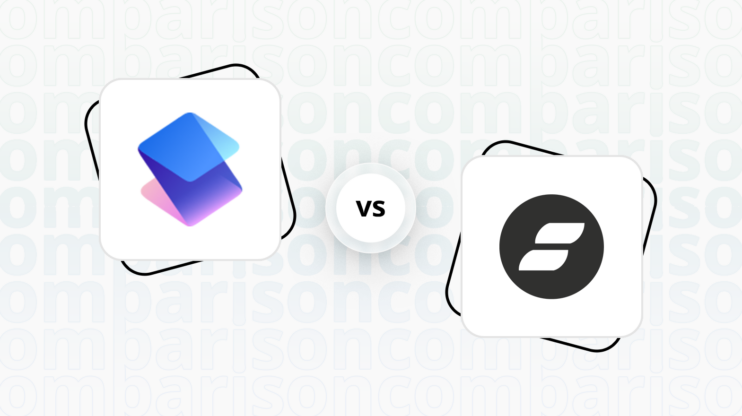Final verdict
WordPress and Unbounce both offer unique strengths, catering to different user needs and preferences.
-
WordPress (Overall Grade: 7.1/10)
is a versatile open-source CMS that excels in customization and flexibility. It is ideal for users who need extensive design options, a wide range of plugins, and robust ecommerce capabilities through WooCommerce. When comparing WordPress vs Unbounce, WordPress is best suited for blogs, business sites, and online stores that require a high degree of customization and scalability. -
Unbounce (Overall Grade: 6.4/10)
is a specialized website builder focused on creating high-converting landing pages. It is perfect for marketers and businesses looking to optimize conversion rates without needing coding skills. Considering WordPress vs Unbounce, Unbounce stands out for its user-friendly drag-and-drop interface, strong integration with marketing tools, and advanced AI capabilities, making it an excellent choice for targeted marketing campaigns.

|

|
|
|---|---|---|
|
Design functionalities & templates |
9.0 |
7.8 |
|
Ease of use |
7.2 |
8.2 |
|
Ecommerce |
8.4 |
4.8 |
|
Website Editors |
8.5 |
7.5 |
|
Product testing options |
8.1 |
6.6 |
|
Price |
5.9 |
7.0 |
|
Hosting quality |
0 |
3.9 |
|
Website speed optimization |
6.5 |
5.6 |
|
Plugins and integrations |
8.8 |
6.8 |
|
Marketing features |
8.0 |
7.4 |
|
Customer support |
5.0 |
7.7 |
|
Security |
6.7 |
8.4 |
|
AI capabilities |
6.1 |
7.5 |
|
User Management |
8.8 |
7.2 |
Best for ecommerce
 8.4
8.4
 4.8
4.8
Verdict
: WordPress is the superior choice for ecommerce, offering extensive features and customization options, while Unbounce is more suited for creating high-converting landing pages with limited ecommerce capabilities.
-
WordPress
: With a score of 8.4, WordPress excels in ecommerce through its WooCommerce integration, providing multiple payment gateways, abandoned cart recovery, and extensive plugin support. It is ideal for businesses looking for a highly customizable and scalable ecommerce solution. -
Unbounce
: Scoring 4.8, Unbounce is primarily focused on optimizing conversion rates through custom landing pages. While it can integrate with ecommerce platforms like Shopify or Ecwid, it lacks the comprehensive ecommerce features that WordPress offers, making it less suitable for full-fledged online stores.
Best for informational & business websites
 9.2
9.2
 5.9
5.9
Verdict
: WordPress is the superior choice for informational business websites, offering extensive customization and a vast array of plugins. Unbounce, while excellent for landing pages, falls short in this category.
-
WordPress
: Scoring 9.2, WordPress excels in creating and managing informational websites. Its open-source nature allows for high customization and flexibility, making it suitable for a wide range of business needs. With thousands of themes and plugins, users can tailor their sites to specific requirements, ensuring a unique and professional online presence. WordPress is ideal for those who need a robust, scalable solution for their informational business website. -
Unbounce
: With a score of 5.9, Unbounce is primarily designed for creating high-converting landing pages rather than full-fledged informational websites. While it offers a user-friendly drag-and-drop interface and a variety of templates, its focus on conversion optimization makes it less suitable for comprehensive business sites. Unbounce is best for businesses that need specialized landing pages rather than a complete informational website. When comparing WordPress vs Unbounce, WordPress clearly stands out for informational business websites.
Detailed comparison
Design functionalities & templates
Design FunctionalitiesRepresents how well each platform allows for creative design and customization of websites.Score Components:
- Template Variety (30%): Range and quality of design templates.
- Customization (30%): Flexibility and options for design alterations.
- User Interface (20%): Ease and intuitiveness of the design process.
- Responsiveness (10%): Adaptability to different devices and screen sizes.
- Innovation (10%): Unique design features and tools.
 9.0
9.0
 7.8
7.8
🏆
Winner: WordPress.
If you’re looking for a platform that offers more extensive and flexible design options, WordPress is the preferred choice.
WordPress offers an extensive variety of templates and designs, catering to a wide range of website types beyond just blogs or ecommerce. Its open-source nature allows for high customization and creative freedom, appealing to diverse user needs. While WordPress itself doesn’t sell premium templates, numerous third-party theme shops offer sophisticated and specialized design choices, expanding the possibilities for users.
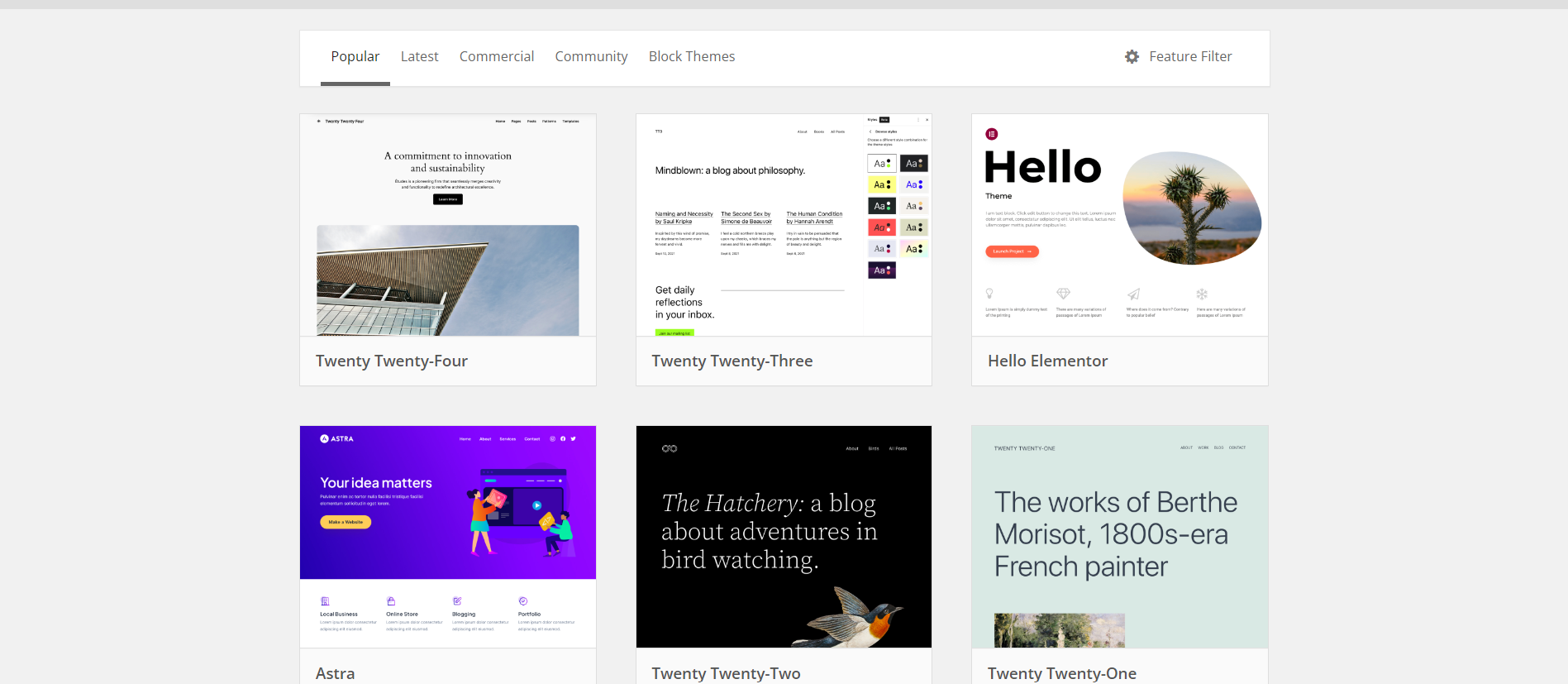

Compared to WordPress, Unbounce provides a gallery of over 100 high-converting templates for landing pages, popups, and sticky bars. These templates are designed with conversion in mind, incorporating knowledge and insights gained from Unbounce’s experience in optimizing landing pages. Users have the flexibility to choose from these ready-to-use templates or start with a blank canvas to create their own designs using Unbounce’s drag-and-drop builder.
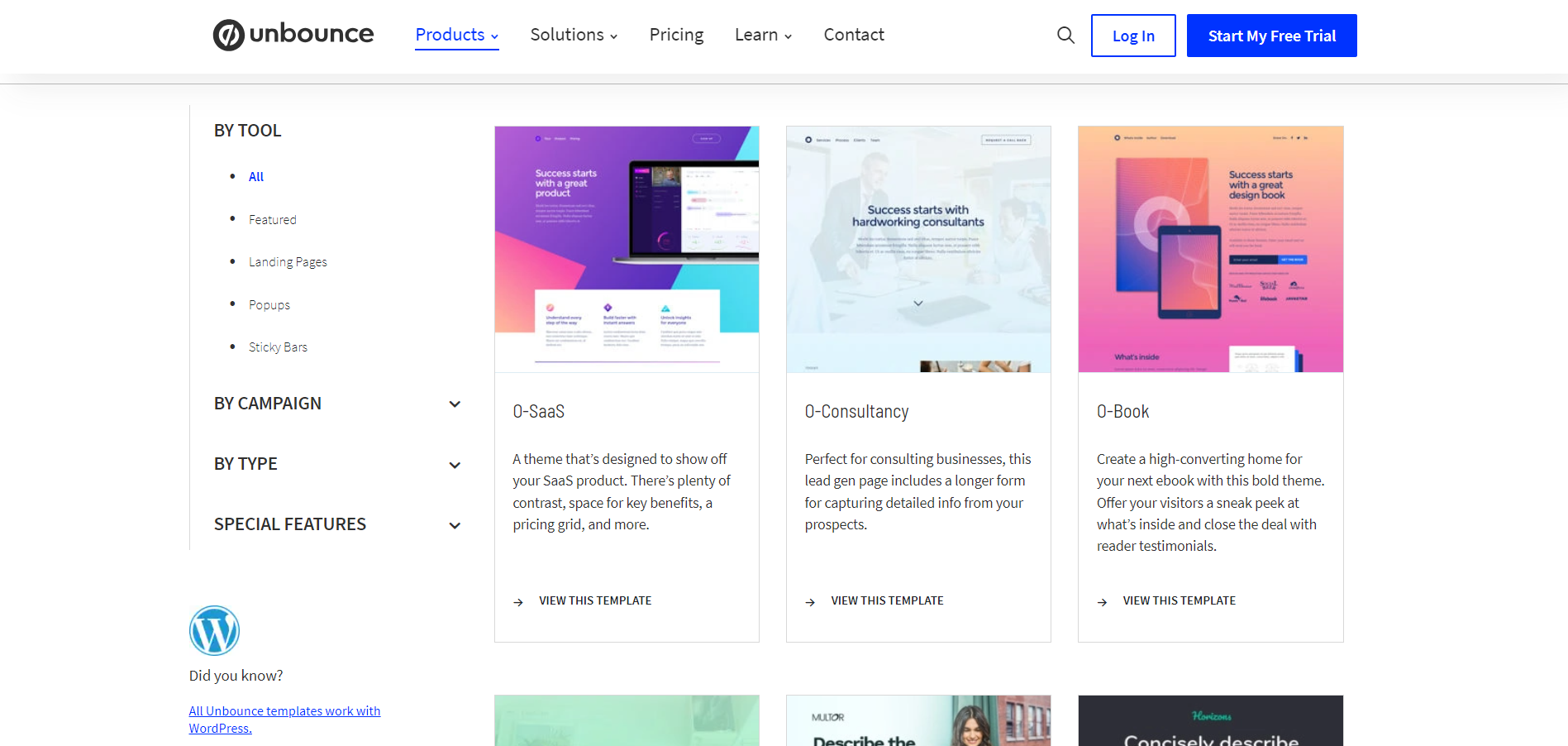
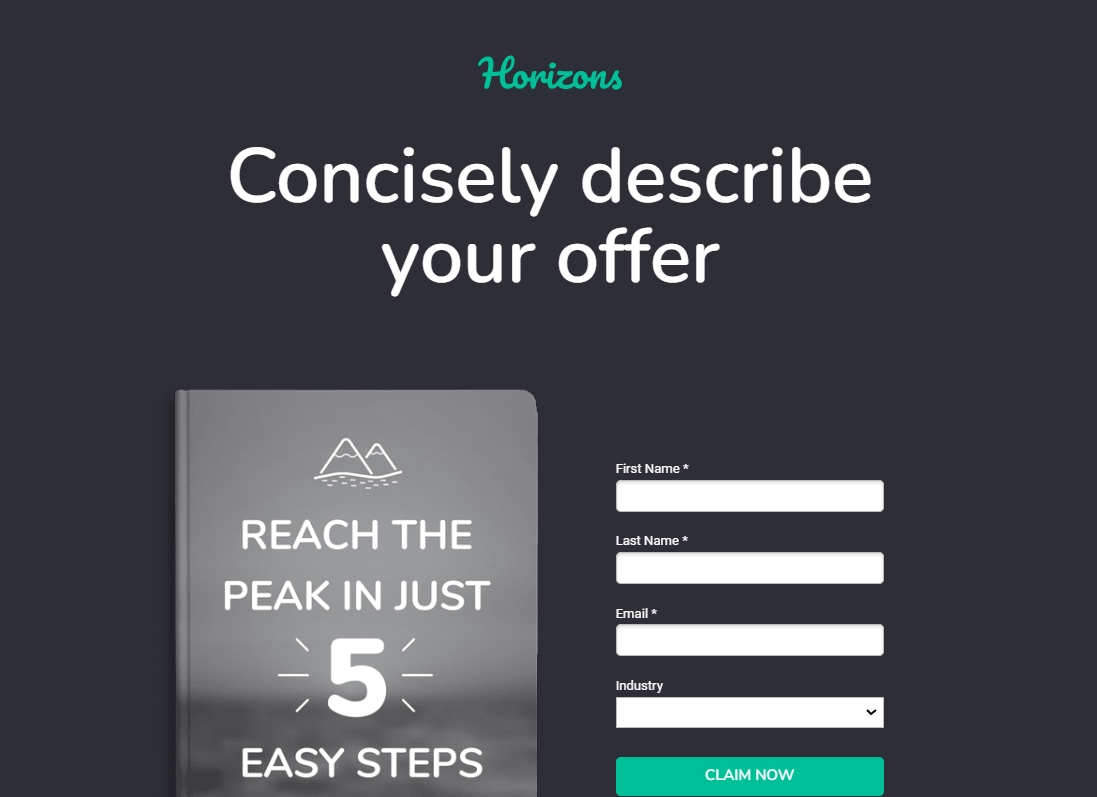
Get a head start on website creation with AI
Create a custom website tailored to your business needs 10X faster with 10Web AI Website Builder!
Ease of use
Ease of useReflects the platform’s overall user-friendliness.Score
Components:
- Learning curve (40%): Quickness and ease of getting started.
- Interface design (30%): Simplicity and intuitiveness of layout.
- User guidance (20%): Quality of tutorials and support.
- Flexibility (10%): Adaptability to various user skills.
 7.2
7.2
 8.2
8.2
🏆 Winner: Unbounce
. With a score of 8.2, Unbounce is recognized for its intuitive drag-and-drop builder and a wide selection of templates, making it easy for users to design and customize landing pages. WordPress, scoring 7.2, offers great flexibility and power, but it can be less intuitive for beginners compared to simpler website builders. If ease of use is a priority, Unbounce is the clear winner in this category.
Learning Resources
🏆 Winner: WordPress
. Both platforms offer solid learning resources, but WordPress stands out with its vast array of detailed documentation, community forums, online tutorials, and courses. This extensive support network is beneficial for users of all skill levels, from beginners learning the basics to advanced users seeking to enhance their expertise.
For ecommerce
EcommerceMeasures the platform’s effectiveness in supporting online business activities.Score Components:
- Ecommerce themes and templates (20%): Variety and design of templates.
- Product management (25%): Ease of managing and organizing products.
- Payment options (25%): Variety and convenience of payment methods.
- Ecommerce features (20%): Features for managing an ecommerce store.
- Integration (10%): Compatibility with external e-commerce tools and services.
 8.4
8.4
 4.8
4.8
WordPress, with its WooCommerce plugin, offers a comprehensive ecommerce solution with features like multiple payment gateway support, abandoned cart recovery, ecommerce analytics, and SEO optimization tools. Unbounce, on the other hand, is primarily focused on creating high-converting landing pages and offers ecommerce capabilities through integrations with platforms like Shopify or Ecwid.

|

|
|
|---|---|---|
|
Ecommerce themes and templates |
9.2 |
2.0 |
|
Product page customization |
9.0 |
3.0 |
|
Payment processing and commissions |
7.5 |
6.5 |
|
POS capabilities |
6.5 |
0.0 |
|
Payment gateways |
8.5 |
7.0 |
|
Product numbers |
7.0 |
0.0 |
|
Additional ecommerce features |
8.0 |
4.5 |
WordPress ecommerce features:
- WooCommerce Integration
- Multiple Payment Gateway Support
- Abandoned Cart Recovery
- Ecommerce Analytics
- SEO Optimization Tools
- Extensive Plugin Ecosystem
Unbounce ecommerce features:
- Shopify, Ecwid, or other ecommerce solutions integration
Ecommerce themes & templates
WordPress offers hundreds to potentially thousands of ecommerce and WooCommerce specific themes and templates, both free and premium. Unbounce, being primarily focused on building landing pages, does not have ecommerce specific templates.
Product page customization
WooCommerce on WordPress offers extensive customization for eCommerce product pages, balancing plugins, page builders, and custom coding. Essential elements include quality product images, detailed descriptions, and effective add-to-cart buttons. Advanced features like product tabs, upsells, and related products are customizable. Tools like Elementor and the Ultimate Product Catalog plugin enhance functionality, but heavy plugin use may affect site performance. Unbounce, on the other hand, does have the possibility to create or customize product pages, but it’s primarily focused on building landing pages, with the possibility to integrate with ecommerce platforms such as Shopify or Ecwid.
Payment processing
WordPress doesn’t handle payments directly but offers plugin options for payment processing. Popular gateways include PayPal, Stripe, Authorize.Net, and Square. Unbounce supports payment processing through an integration with Stripe, allowing users to create landing pages that can handle transactions directly, with Stripe facilitating global payments in over 135 currencies. Unbounce itself does not mention charging additional fees for transactions, implying that fees are subject to Stripe’s own pricing structure. The platform is focused on optimizing online conversions and does not offer Point of Sale (POS) capabilities, as its core features are designed for enhancing digital experiences such as landing pages and pop-ups.
Website Editors
Website EditorsEvaluates the platforms’ website building and editing capabilities.Score Components:
- Customization tools (40%): Range and power of editing features.
- Editor usability (30%): User experience within the editor.
- Design flexibility (20%): Freedom in layout and design changes.
- Update and maintenance ease (10%): Simplicity of updating and maintaining the site.
 8.5
8.5
 7.5
7.5
🏆
Winner: WordPress
. WordPress, with a score of 8.5, offers a user-friendly interface with block-based editing, extensive styles customization, template management, page editing/creation, distraction-free modes, versatile saving options, and accessibility for users of varying skill levels. It provides a WYSIWYG (What You See Is What You Get) interface, with a Design panel on the left and a live preview on the right. You can edit styles, manage templates and pages, and use various blocks for customization. Changes can be applied globally, including Header and Footer templates. The editor also offers features like undo/redo, List View, Command Palette, and customization tools.
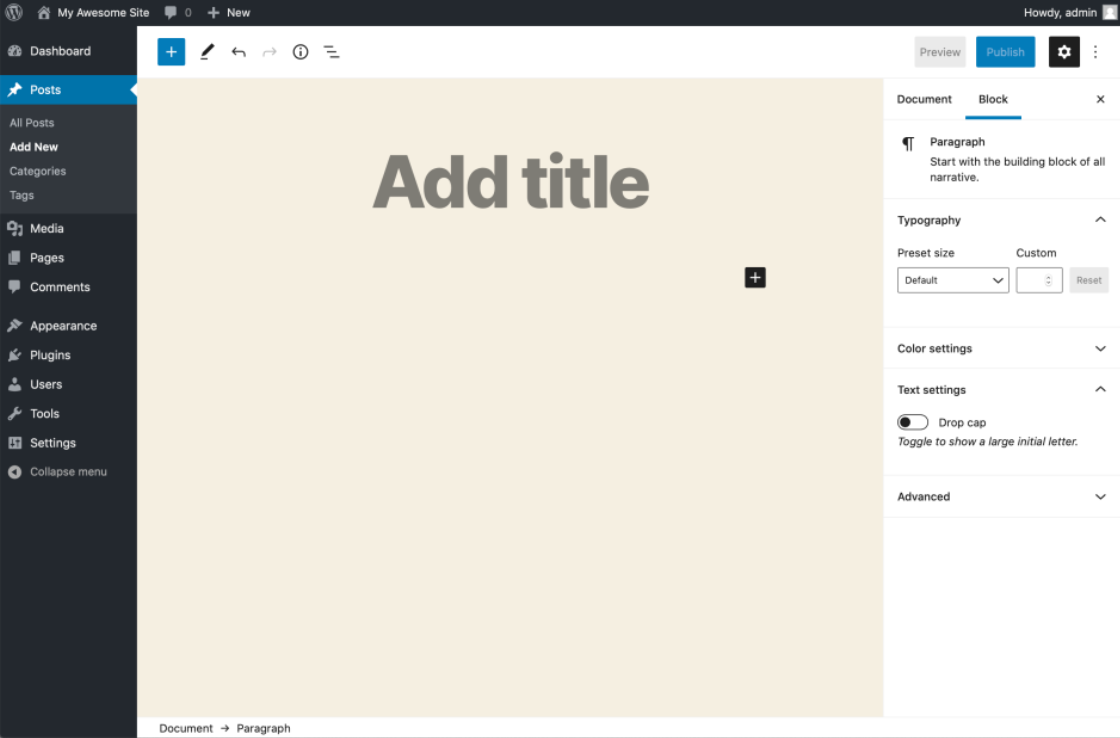
Unbounce’s editor, scoring 7.5, is equipped with a user-friendly drag-and-drop interface, enabling users to design and customize landing pages without the need for coding skills. It offers a variety of templates, widgets, and elements such as forms and buttons, alongside options for integrating custom HTML, CSS, and JavaScript for advanced customization. The platform supports responsive design, ensuring landing pages perform well across all devices, and includes features for A/B testing and dynamic text replacement to optimize conversion rates. Additionally, it allows for the integration of various marketing tools and platforms, enhancing the effectiveness of digital marketing campaigns.
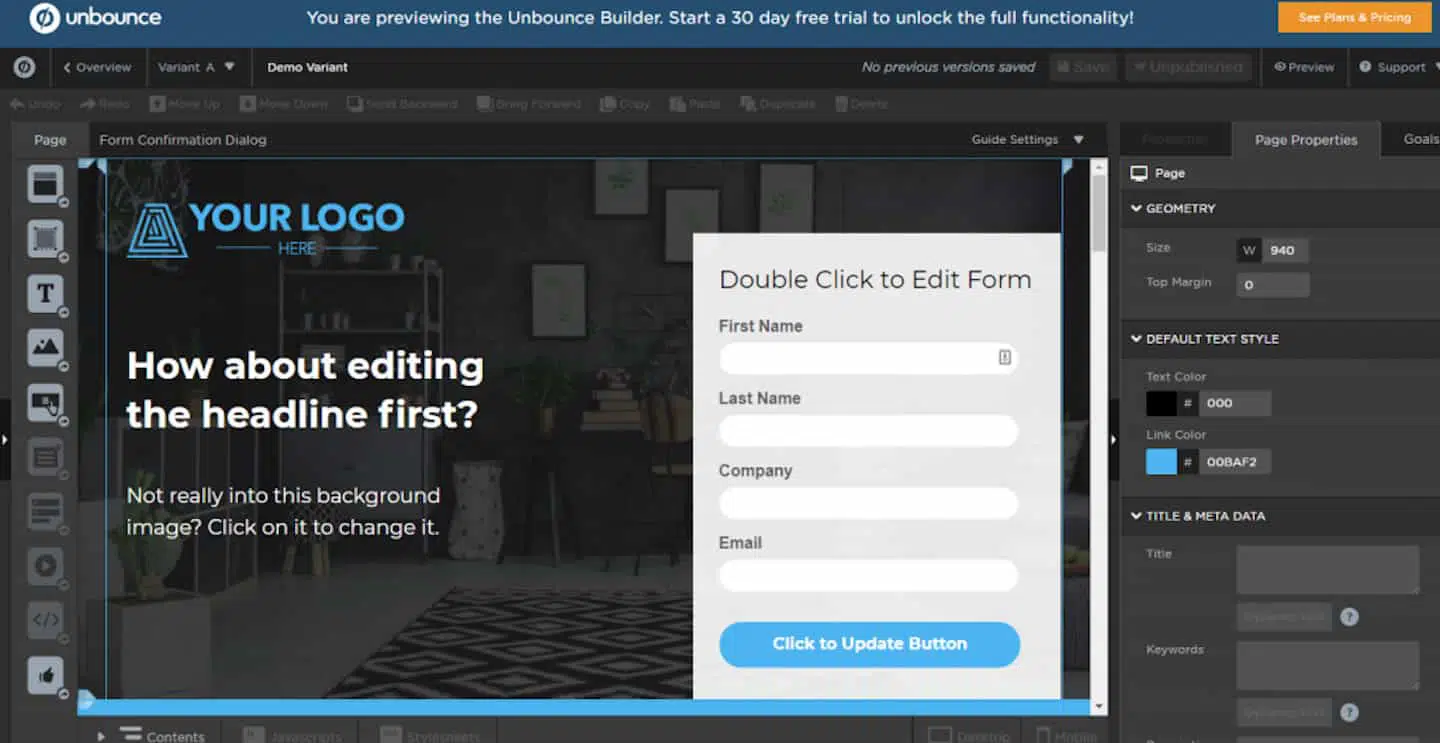
Mobile editor/app
 8.1
8.1
 0
0
🏆
Winner: WordPress
. WordPress offers a mobile editor app that allows users to manage their website on the go. You can create and edit posts, manage comments, schedule content, and analyze website traffic from your phone or tablet. While it offers convenience and basic functionality, it has some limitations compared to the web-based editor, including fewer advanced options, restricted code access, and limited design customization.
On the other hand, Unbounce does not have a dedicated mobile editor app. Therefore, if you’re looking for a platform that allows you to manage your website from your mobile device, WordPress would be a better choice.
In summary, WordPress receives a higher rating due to its mobile editor app, while Unbounce does not offer this feature.
Product testing options
Product Testing OptionsAssesses the options for trying out platform features before commitment.Score Components:
- Trial quality (40%): Extent and usefulness of the trial or free version.
- Feature accessibility (30%): How many features are available to test.
- Trial duration (20%): Length of the trial period.
- Ease of transition (10%): Smoothness of moving from trial to paid plans.
 8.1
8.1
 6.6
6.6
Overall Result
:
WordPress wins
. WordPress scores 8.1, offering a free version of its open-source software, while Unbounce scores 6.6, providing a 14-day free trial with the possibility to test premium features. However, Unbounce requires users to enter their billing information for the free trial and does not offer a money-back guarantee.

|

|
|
|---|---|---|
|
Free Plan |
Yes (open source software) |
No |
|
Trial Duration |
No | 14 days |
|
Testing Premium Features |
No |
Yes, during the 14-day free trial |
Price
PriceLooks at the cost-effectiveness and value for money of each platform.Score Components:
- Plan value (40%): What each pricing tier offers.
- Transparency and clarity (30%): Clearness of pricing structures.
- Flexibility of plans (20%): Range of options to suit different budgets.
- Hidden costs (10%): Additional expenses not included in the plan.
 5.9
5.9
 7.0
7.0
Unbounce offers a range of pricing plans with a focus on conversion optimization, while WordPress is a free open-source platform, but requires separate costs for hosting and domain services.

|

|
|
|---|---|---|
|
Free |
Free Plan ($0/month): WordPress is open source software that is free. WordPress does not provide hosting services; so, it is necessary to purchase a domain, web hosting, and website builder subscriptions separately. While WordPress lacks built-in ecommerce, plugins like WooCommerce offer a solution. WordPress offers an extensive variety of templates and designs. WordPress lacks a built-in AI-assisted builder, but its open-source nature allows for an ecosystem of plugins and themes incorporating AI for website building. |
No offering at this amount. |
|
$90-$100 |
No offering at this amount. |
Build ($99.00/month): Provides tools for building and launching high-converting landing pages, unlimited pages, popups, sticky bars, a form builder, free hosting, AI copywriting, custom scripts, 1,000+ integrations, support for 1 root domain with unlimited subdomains, catering up to 20,000 monthly unique visitors. Value for price: 6.5 |
|
$100-$200 |
No offering at this amount. |
Experiment ($149.00/month): Includes everything in the Build plan plus unlimited A/B tests, advanced reporting, dynamic text replacement, support for 2 root domains, and up to 30,000 monthly unique visitors. Value for price: 7.5 |
|
$200-$300 |
No offering at this amount. |
Optimize ($249.00/month): Adds to the Experiment plan with AI traffic optimization, visitor behavior insights, advanced targeting, supports 3 root domains, and caters to up to 50,000 monthly unique visitors. Value for price: 8.0 |
|
$600+ |
No offering at this amount. |
Concierge (Starting at $649/month): Offers everything in the Optimize plan plus dedicated support, implementation services, client and user management, flexible add-on plans for scaling, starting with 5 root domains and 100,000 monthly unique visitors, with options to scale. |
location. As a result in rare cases the prices displayed here can differ from the ones you see on their
websites.
Hosting quality
Hosting
qualityExamines the reliability and performance of the hosting solutions.Score Components:
- Uptime (40%): Consistency and reliability of website availability.
- Speed (30%): Loading times and performance.
- Bandwidth and storage (20%): Sufficiency of resources provided.
- Data centers (10%): Quality and distribution of hosting infrastructure.
 0
0
 3.9
3.9
Winner: Unbounce
. Unbounce offers hosting services with an uptime of 99.96%, although it does not specify the type of hosting it provides or disclose the locations of its data centers. On the other hand, WordPress, being an open-source content management system, does not directly provide hosting services. The uptime, uptime guarantee, and data centers for websites built with WordPress depend on the hosting provider chosen by the user.

|

|
|
|---|---|---|
|
Do they offer hosting? |
No | Yes |
|
Data Centers: |
Depends on hosting provider | Not disclosed |
|
Type of hosting: |
Depends on hosting provider | Not specified |
|
Uptime: |
Depends on hosting provider | 99.96% |
|
Uptime Guarantee: |
Depends on hosting provider | No |
Website Speed Optimization
Website Speed OptimizationEvaluates optimization of website loading timesScore Components:
- PageSpeed Score (30%): Google’s score indicating performance optimization.
- Loading Time (30%): The average time until a website is fully interactive.
- Mobile Optimization (15%): Optimization effectiveness for mobile devices.
- Resource Optimization (15%): Optimizing images, scripts, and other heavy resources.
- CDN Usage (10%): Use of CDN to enhance speed across geolocations.
 6.5
6.5
 5.6
5.6
🏆 Winner: WordPress
Both WordPress and Unbounce have their own strategies for website speed optimization. However, WordPress provides more resources and tools for enhancing website’s Core Web Vitals (CWV), giving it an edge over Unbounce.

|

|
|
|---|---|---|
|
Focus |
Extensive customization options |
Optimizing conversion rates |
|
Performance Tools |
Core Web Vitals, WP Rocket, Hummingbird |
Image optimization, Caching, Speed Booster |
|
Key Strategies |
No specific strategy, but provides numerous learning resources for optimization |
Image optimization, Caching, Speed Booster |
|
Load Times |
Varies widely, dependent on optimization |
Varies depending on optimization and website complexity |
|
Page Speed Scores Range |
Scores vary; influenced by apps, images |
Varies depending on optimization and website complexity |
|
Core Web Vitals Improvement |
Provides resources for enhancing CWV |
No information provided |
WordPress, an open-source content management system, does not have a specific strategy for website speed optimization. However, it provides numerous learning resources about how to optimize your website. It also provides valuable resources for enhancing your website’s Core Web Vitals (CWV), such as analyzing CWV, choosing a reliable host, optimizing images, minimizing plugins, using lazy loading, and employing a CDN. Tools like Core Web Vitals, WP Rocket, Hummingbird are recommended, and AMP is considered for mobile speed. The load times and PageSpeed scores vary widely and are dependent on optimization.
On the other hand, Unbounce, a website builder specifically designed for creating custom landing pages, focuses on image optimization, caching, and Speed Booster for website speed optimization. However, it does not provide any information on their Core Web Vitals improvements. The load times and PageSpeed scores vary depending on optimization and website complexity.
Get a head start on website creation with AI
Create a custom website tailored to your business needs 10X faster with 10Web AI Website Builder!
Plugins and integrations
Plugins and integrationsMeasures the range and effectiveness of additional plugins and integrations.Score Components:
- Variety of options (40%): Range of available add-ons.
- Integration smoothness (30%): Ease of integrating plugins into the site.
- Quality of plugins (20%): Functionality and reliability of the options.
- Custom integration capabilities (10%): Support for custom or third-party integrations.
 8.8
8.8
 6.8
6.8
🏆 Winner: WordPress.
With a score of 8.8, WordPress offers over 60,000 free plugins and thousands of premium ones, extending its functionality across various domains. Unbounce, scoring 6.8, also offers a wide array of apps and integrations, but the sheer volume and diversity of WordPress plugins give it a clear advantage.
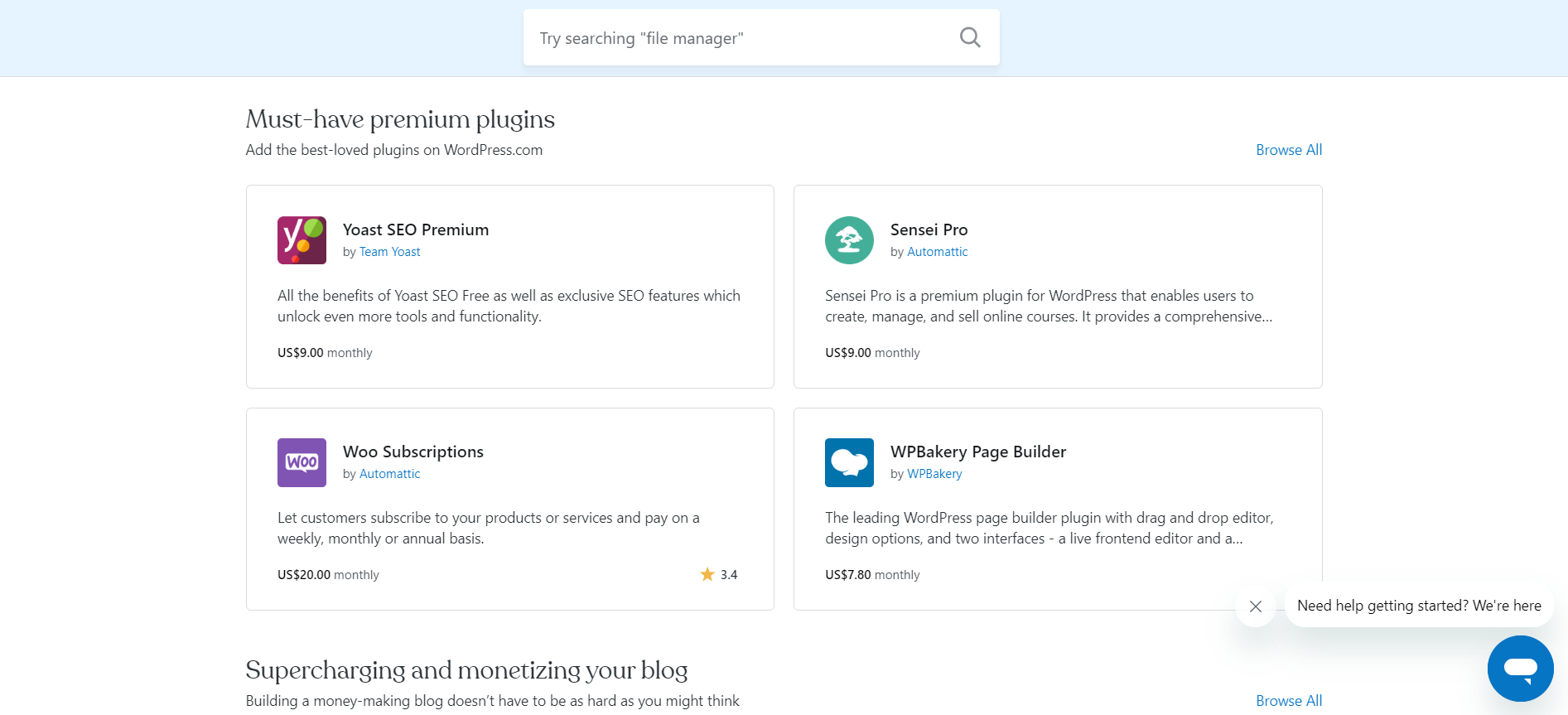

Marketing Features
Design FunctionalitiesRepresents how well each platform allows for creative design and customization of websites.Score Components:
- Template Variety (30%): Range and quality of design templates.
- Customization (30%): Flexibility and options for design alterations.
- User Interface (20%): Ease and intuitiveness of the design process.
- Responsiveness (10%): Adaptability to different devices and screen sizes.
- Innovation (10%): Unique design features and tools.
 8.0
8.0
 7.4
7.4
🏆
Overall Winner: WordPress
. WordPress stands out for its extensive customization options and the availability of a blogging feature. Unbounce, while lacking a blogging feature, is strong in creating custom landing pages, popups, and sticky bars, making it particularly favored for optimizing conversion rates.

|

|
|
|---|---|---|
|
SEO Tools |
|
|
|
Email Marketing |
|
|
|
Blogging |
|
|
|
Social Media Integration |
Plugins for direct linking, automatic posting, and social feeds display |
Yes |
|
Analytics and Reporting |
In-depth analysis via plugins like Google Analytics for WordPress |
Yes |
|
Ads and Promotions |
Support for Google Ads and ad management through various plugins |
Yes, Unbounce landing pages can be used for ad campaigns and promotions |
Customer Support
Customer supportEvaluates the quality and availability of support options.Score Components:
- Response time (40%): Speed of support responses.
- Support quality (30%): Effectiveness and helpfulness of the support.
- Availability (20%): Range of support channels (phone, chat, email).
- Resource richness (10%): Quality of self-help and educational materials.
 5.0
5.0
 7.7
7.7
🏆 Winner: Unbounce
. In the comparison of WordPress vs Unbounce, Unbounce takes the lead with a customer support score of 7.7, significantly higher than WordPress’s score of 5.0. Unbounce offers a comprehensive support system that includes live chat, email, and phone support available Monday to Friday, from 6 AM to 6 PM PST. Additionally, users have access to 24/7 support through their Help Centre, Community, and Chat Bot, ensuring continuous assistance.
WordPress, being an open-source platform, lacks direct customer support. Users rely on community forums, the WordPress codex, hosting provider support, and plugin and theme support for assistance. While these resources are extensive, the absence of a dedicated support team can be a drawback for users seeking immediate help.
For enterprise-level support, Unbounce provides a concierge enterprise plan with dedicated customer support, personalized training, and optimization sessions, making it a robust choice for businesses looking to optimize their campaigns. WordPress, on the other hand, may offer enterprise support through hosting providers, but this is typically limited to hosting-related issues.
Security
SecurityLooks at the platforms’ security measures and data protection.Score Components:
- Data protection (40%): Safeguards for user and customer data.
- SSL and encryption (30%): Implementation of secure connections.
- Compliance (20%): Adherence to industry security standards.
- Regular updates (10%): Frequency of security updates and patches.
 6.7
6.7
 8.4
8.4
🏆
Winner: Unbounce
. Unbounce takes a proactive approach to security, with a robust framework that includes compliance with key regulations, a defense-oriented architecture, and network safety measures. The platform is designed to minimize attack risks and ensure swift recovery processes, with encrypted communications and stringent firewall policies for enhanced protection against external threats.
WordPress, as an open-source content management system, relies heavily on the hosting provider and the plugins used for security. While it offers numerous functionalities and resources to enhance website security, such as site backups, monitoring, malware scanning, user activity tracking, permission control, and spam protection tools, its security score is lower than Unbounce’s, making Unbounce the winner in this category.
AI Capabilities
AI capabilitiesMeasures the effectiveness of AI-driven features and tools.Score Components:
- Automation efficiency (40%): Impact of AI on streamlining processes.
- Personalization (30%): AI-driven customization for users or customers.
- AI-Assisted design (20%): Role of AI in website design and functionality.
- Data analysis (10%): Use of AI in interpreting user data and analytics.
 6.1
6.1
 7.5
7.5

|

|
|
|---|---|---|
|
AI-assisted Builder |
AI Site Builder and Zita plugins |
Unbounce’s Smart Builder |
|
AI Ecommerce features |
Conversios, Ochatbot, AI Power, GetGenie, Woowoo plugins |
|
|
AI Content Generation |
AI Engine, GetGenie, AI Power plugins |
Unbounce’s Smart Copy |
|
Additional AI features |
Various AI-powered plugins |
Smart Traffic, Conversion Intelligence Insights |
🏆 Winner: Unbounce
. With a score of 7.5, Unbounce’s AI capabilities are more integrated and user-friendly. Its Smart Builder and Smart Copy features streamline the process of creating and optimizing landing pages. Additionally, Unbounce’s Smart Traffic and Conversion Intelligence Insights use AI to enhance conversion rates by directing visitors to the most suitable landing page variant and providing practical advice to improve landing page effectiveness.
WordPress, scoring 6.1, relies on a variety of plugins for AI capabilities. While this allows for a wide range of AI features, it requires users to manually install and manage these plugins. This can be more time-consuming and less streamlined compared to Unbounce’s built-in AI features.
User Management
User ManagementAssesses the platforms’ capabilities in managing user roles, permissions, and accessibility.Score Components:
- Role Customization (40%): Flexibility in creating and defining user roles and
permissions. - Ease of Management (30%): User interface and tools for managing users.
- Access Control (20%): Effectiveness of access control measures for different user
levels. - Scalability (10%): Ability to manage a growing number of users efficiently.
 8.8
8.8
 7.2
7.2
🏆 Winner: WordPress
. WordPress and Unbounce offer different approaches to user management.
- WordPress provides a range of user roles from Super Admin to Subscriber, each with different levels of permissions. Additional controls such as role management plugins and revision control offer further customization for specific editing rights and collaboration.
- Unbounce offers one staff account on its basic plan, with the option to expand up to 15 accounts on the premium plan. It also provides customizable permissions, enabling you to restrict or grant access based on roles such as viewer, author, and administrator.
WordPress User Roles and Access Levels:
| Role | Description | Access Highlights |
|---|---|---|
| Super Admin | Manages the entire network in WordPress Multisite. | Network admin, manage sites, users, plugins, themes. |
| Administrator | Full access within a single site. | Manage plugins, themes, users, all posts/pages. |
| Editor | Manages and publishes content, including others’ posts. | Edit/publish all posts, manage comments, categories. |
| Author | Publishes and manages their own posts. | Write, edit, publish own posts, upload files. |
| Contributor | Writes and edits their own posts but cannot publish. | Write, edit own posts (no file uploads or publishing). |
Unbounce User Roles and Access Levels:
| Role | Description | Access Highlights |
|---|---|---|
| Viewers | Members of your team who want to view and approve pages, popups, or sticky bars before publication. | Can access pages, popups, sticky bars, stats, and leads. Cannot edit/manage pages or access account management, billing details, domains, or add users. |
| Authors | Designers or copywriters invited to edit landing pages. | Can edit, manage, publish/unpublish pages, popups, sticky bars. Have access to viewing leads and stats. Cannot access account management, billing details, domains, or add users. |
| Administrators | Manage the Unbounce account, including billing details. | Can edit, manage, publish/unpublish pages, popups, sticky bars. Can access account management, billing details, domains, and add users. Cannot delete leads or remove other Admins. |
Additional Features

|

|
|
|---|---|---|
|
SSL Certificate |
|
|
|
Custom Domain |
|
|
|
Free Custom Domain Included |
|
|
|
International Domains |
|
|
|
Mobile Responsive |
|
|
|
Page Speed |
|
|
|
Website Builder Mobile App |
|
|
|
Convert a Website To An App |
|
|
|
Website Analytics |
|
|
|
Multilingual Sites |
|
|
|
Multiple Users |
|
|
User Feedback
WordPress receives praise for its user-friendliness, cost-effectiveness, extensive themes and plugins, customization options, and supportive community. However, users mention technical challenges, security concerns, a learning curve, and a lack of direct support. Overall, it remains a widely used and versatile platform, especially beneficial for startups and small businesses.
The reviews for Unbounce reveal a mixed sentiment among users. On the positive side, many appreciate its user-friendly, drag-and-drop page builder, which facilitates the quick creation and editing of landing pages without the need for technical expertise. Users find it beneficial for A/B testing, integrating with CRMs, and swiftly turning around marketing content. However, there are notable concerns, particularly with a case of unexpected switch to an annual plan without consent and refusal to refund, indicating potential issues with customer service and billing practices. Additionally, some users mention technical limitations, such as responsiveness issues and the absence of global elements for content updates across multiple pages, which can hinder efficiency.
The making of this blog
We followed a clear, step-by-step process to write and research this article.
FAQ
Can I use WordPress or Unbounce for my ecommerce site?
Which platform is easier for beginners?
How do WordPress and Unbounce compare in terms of design flexibility?
Which platform offers better customer support?
Can I manage multiple users with WordPress or Unbounce?
Which platform is better for marketing and SEO?
Are WordPress and Unbounce secure platforms for building websites?
How do WordPress and Unbounce handle website speed optimization?
Which platform is more cost-effective?










